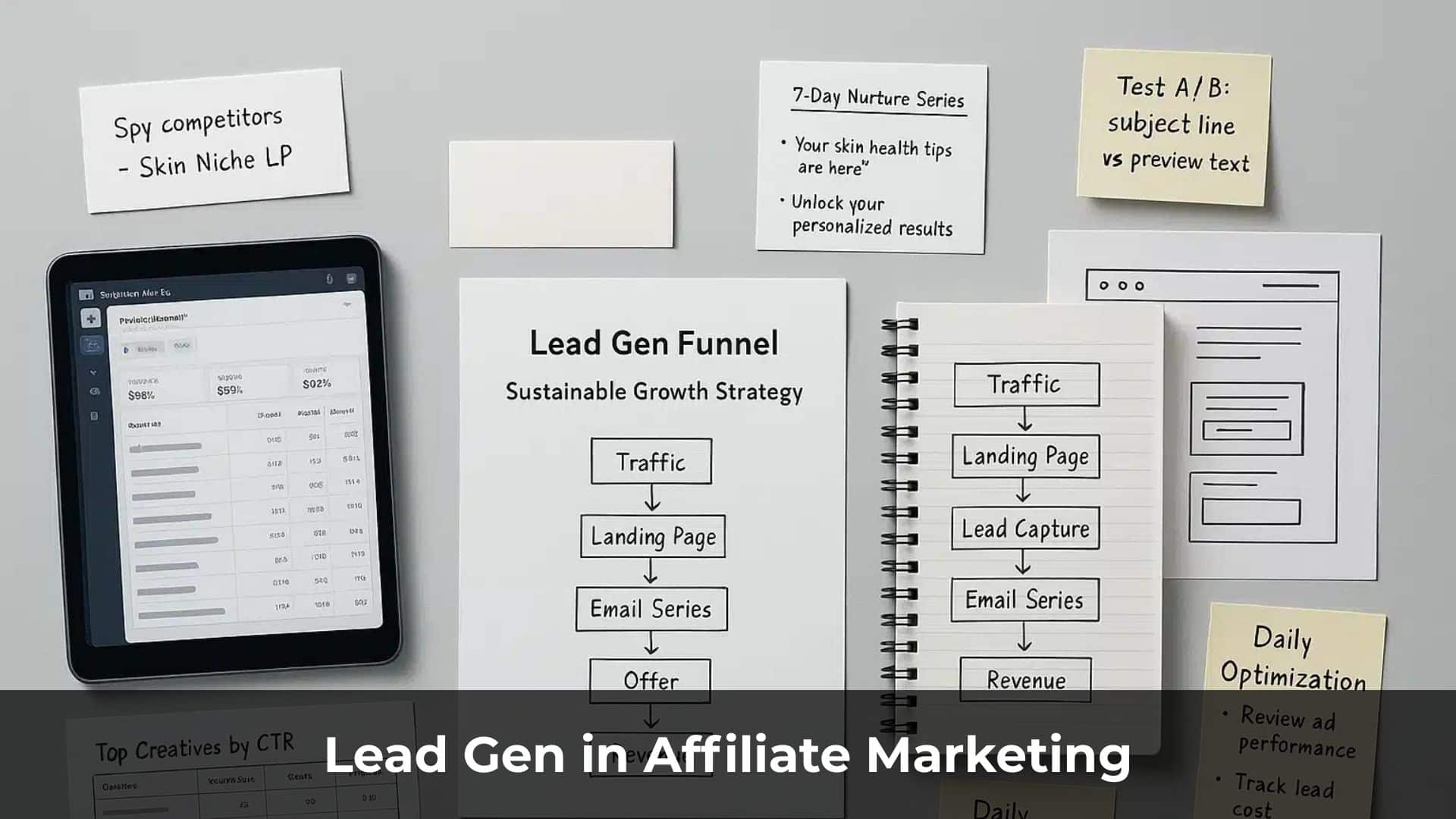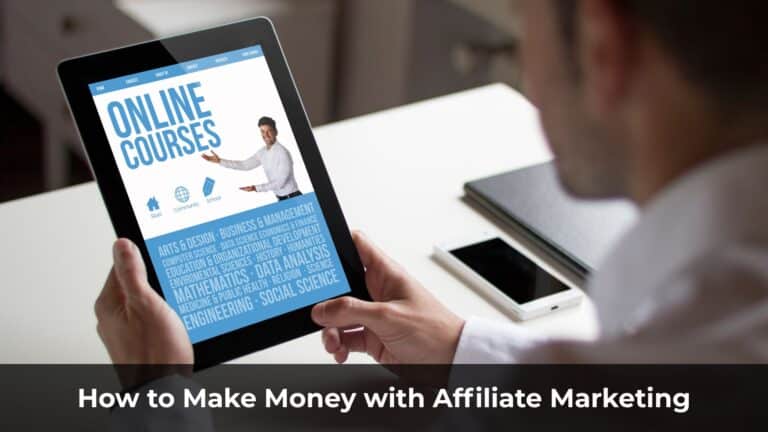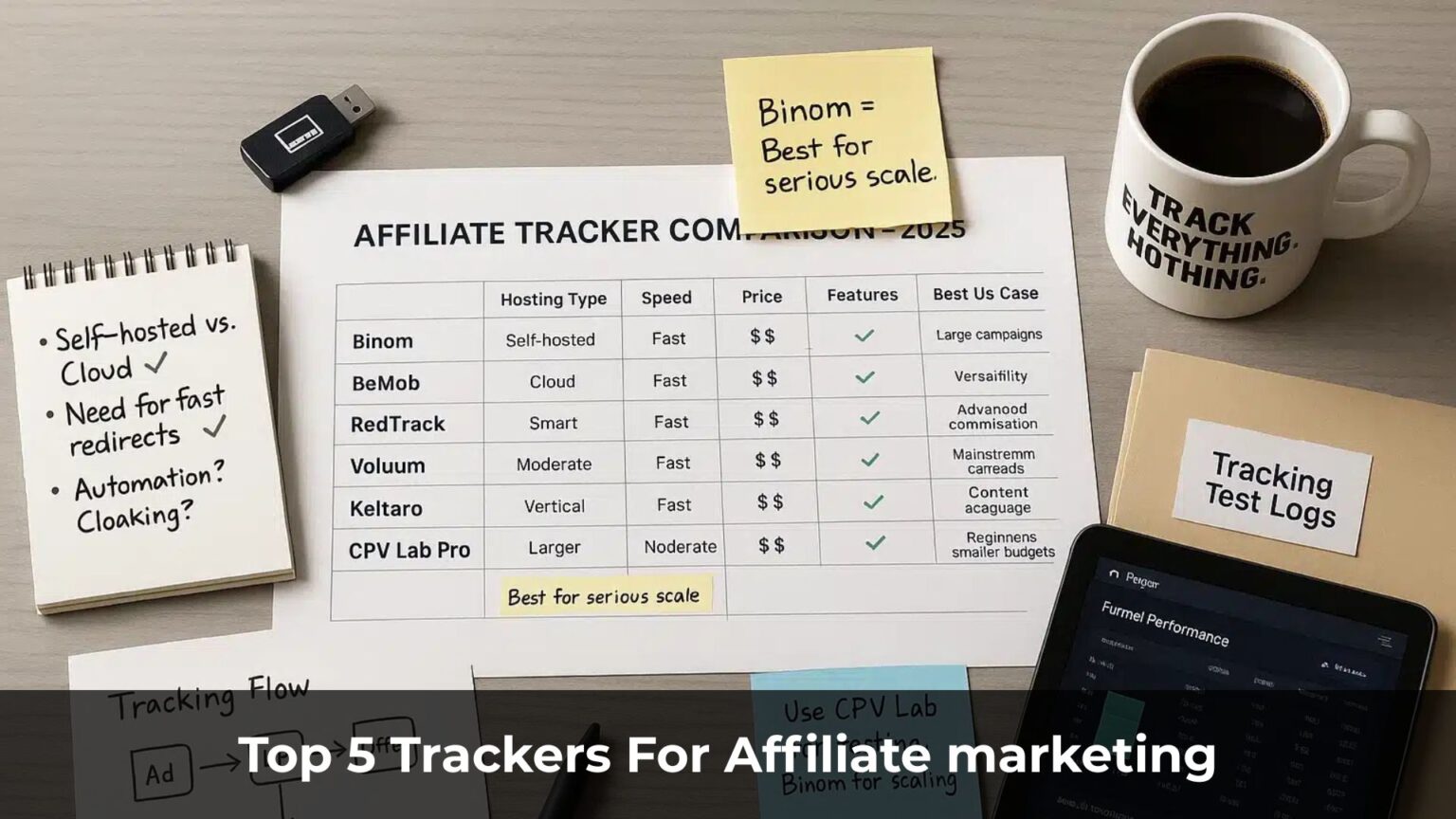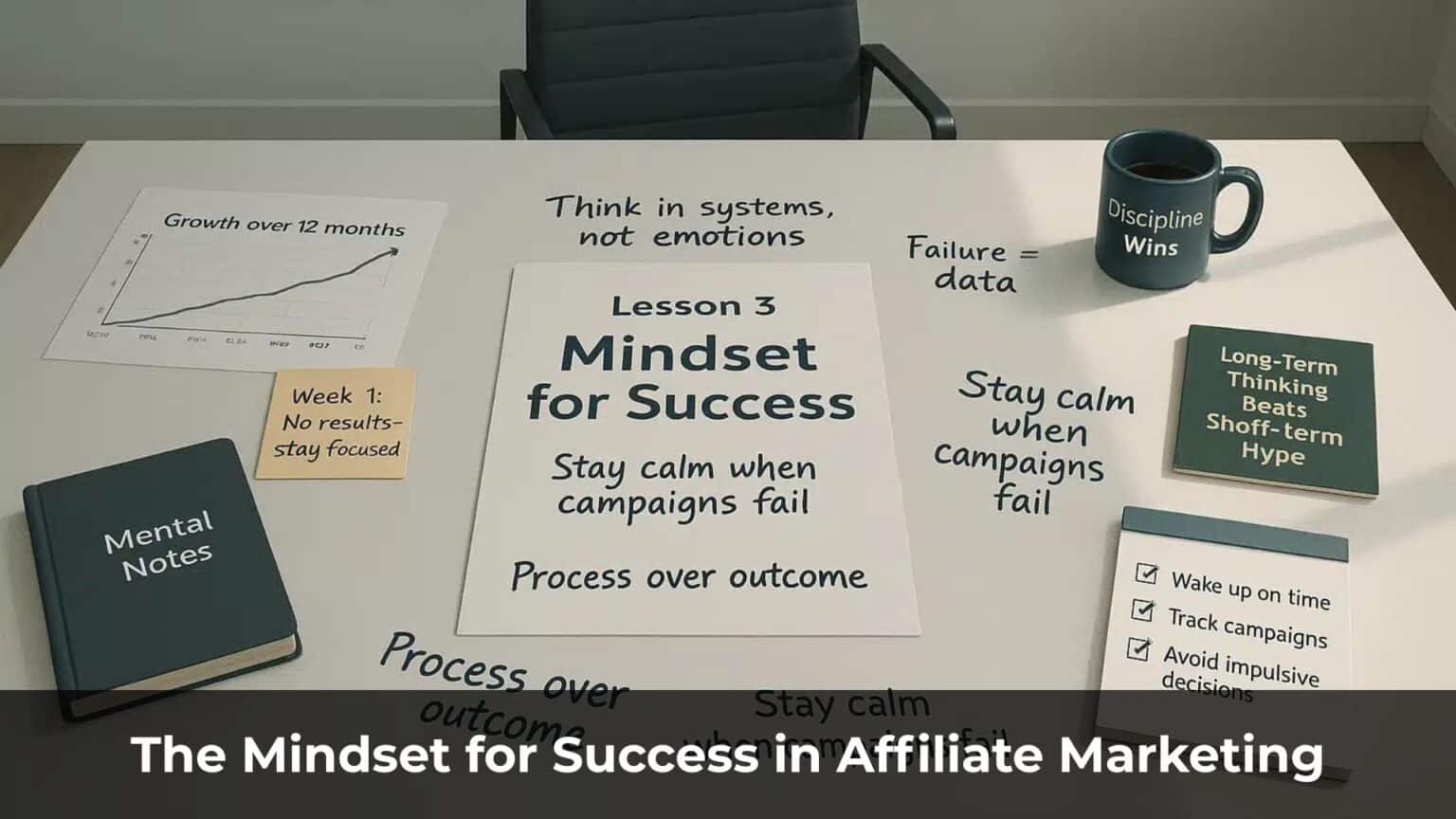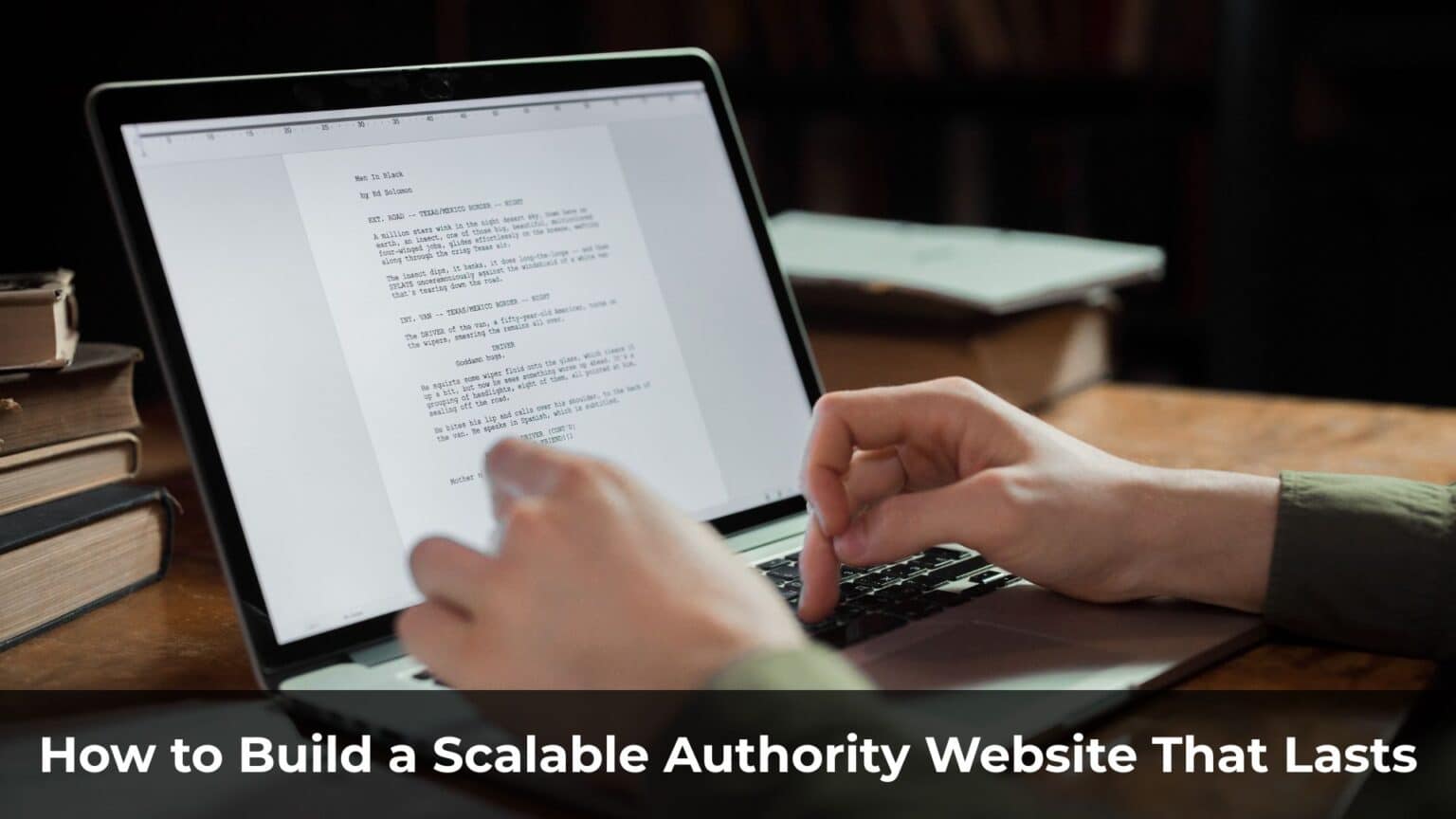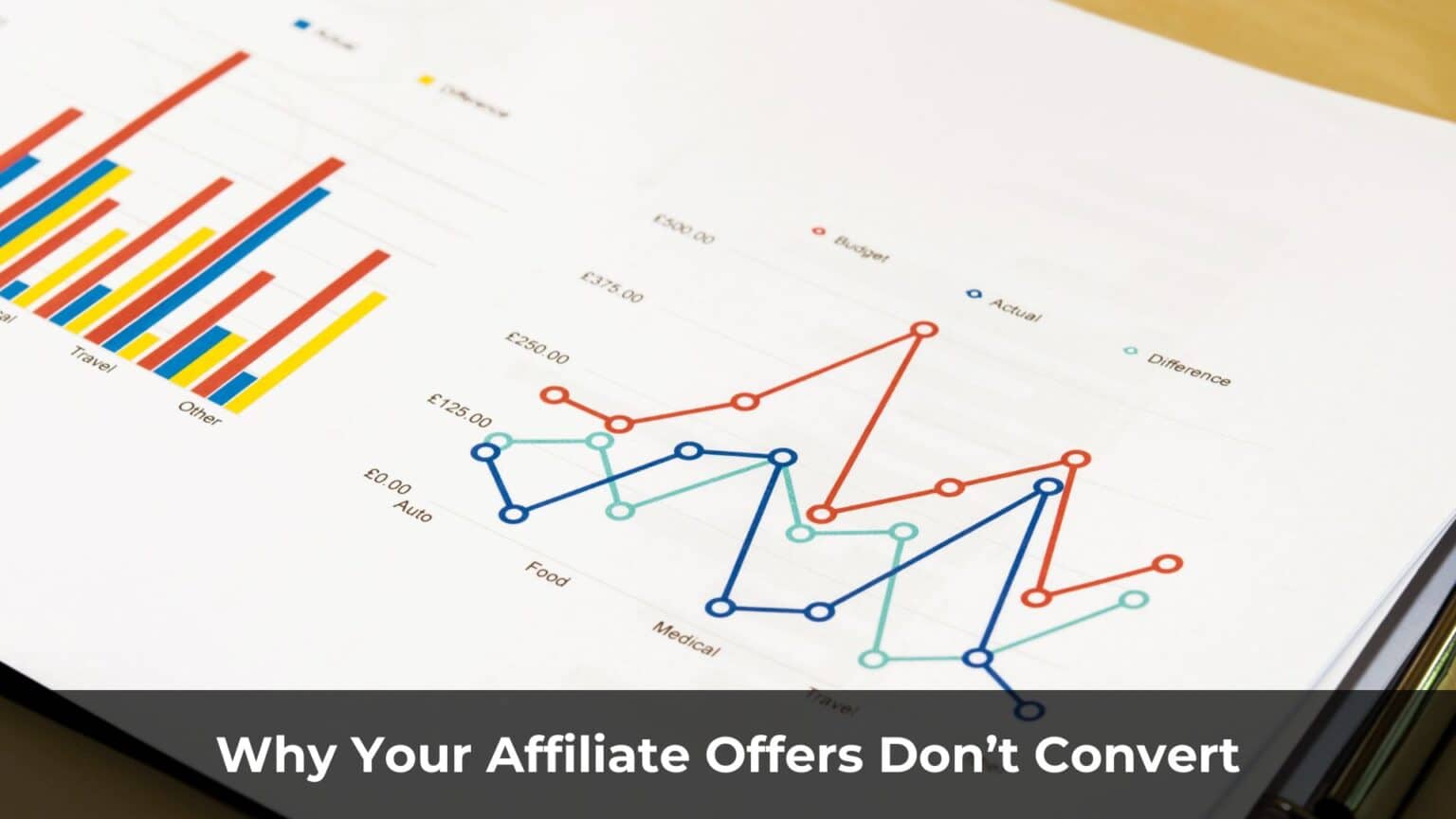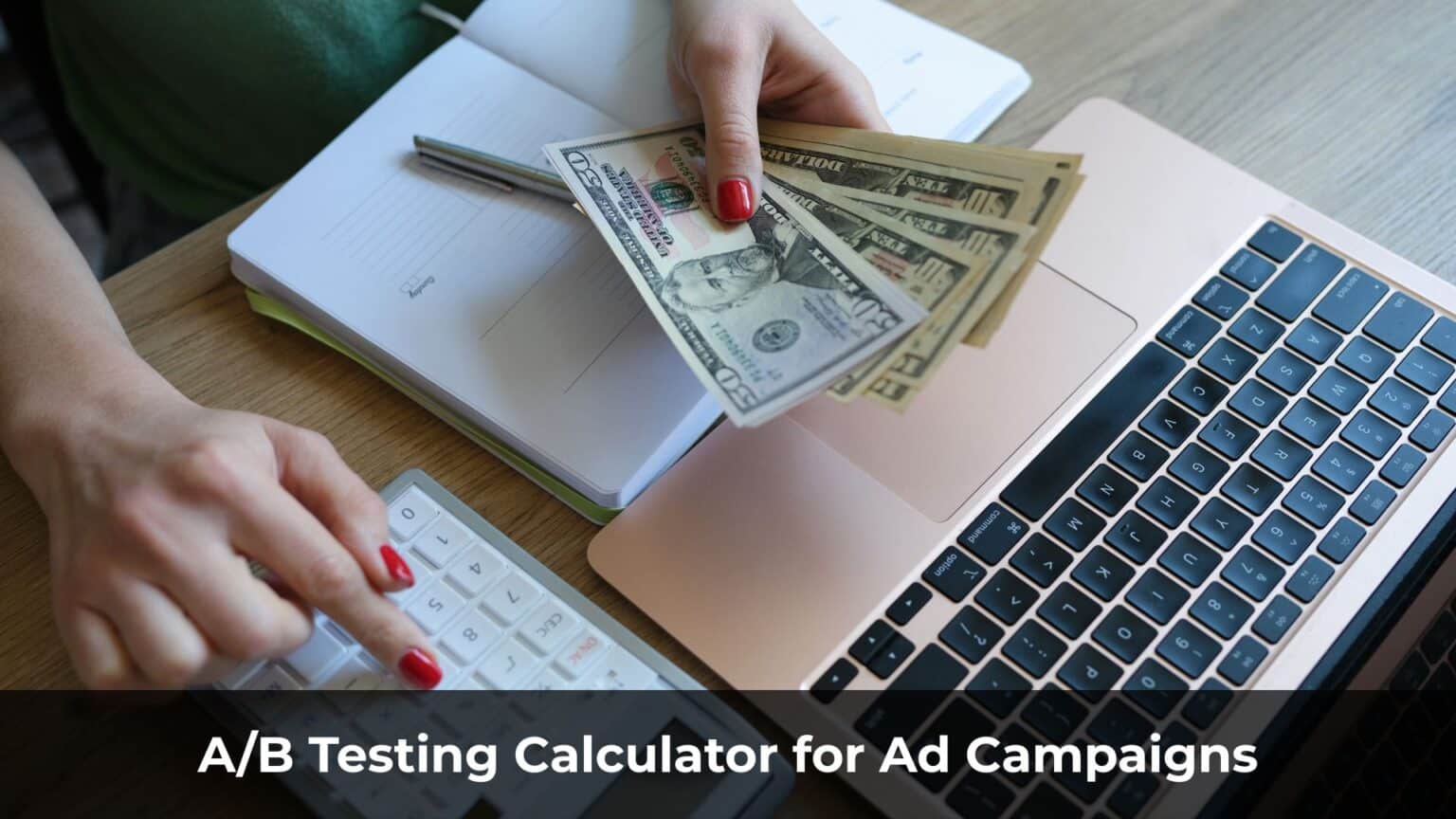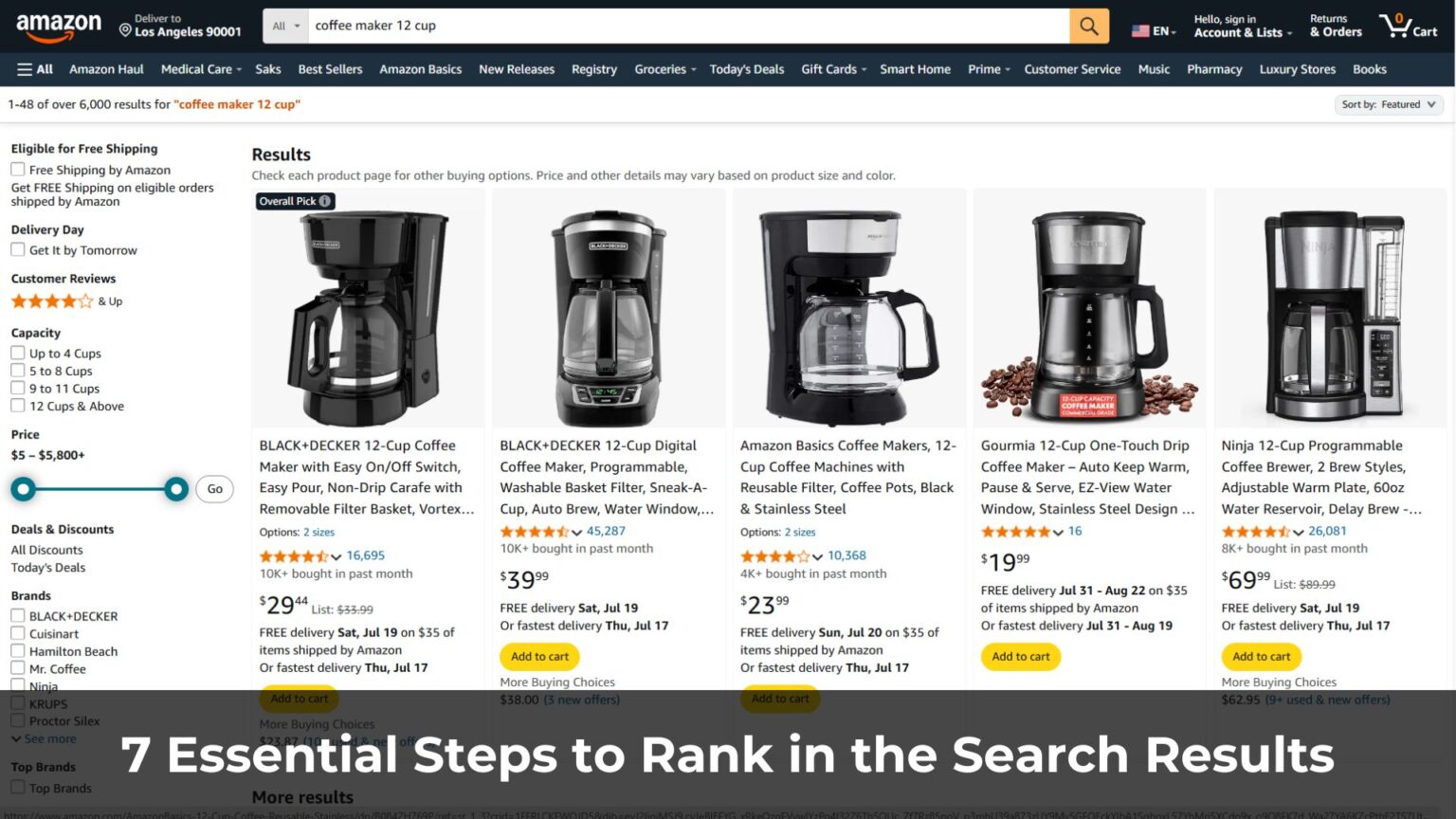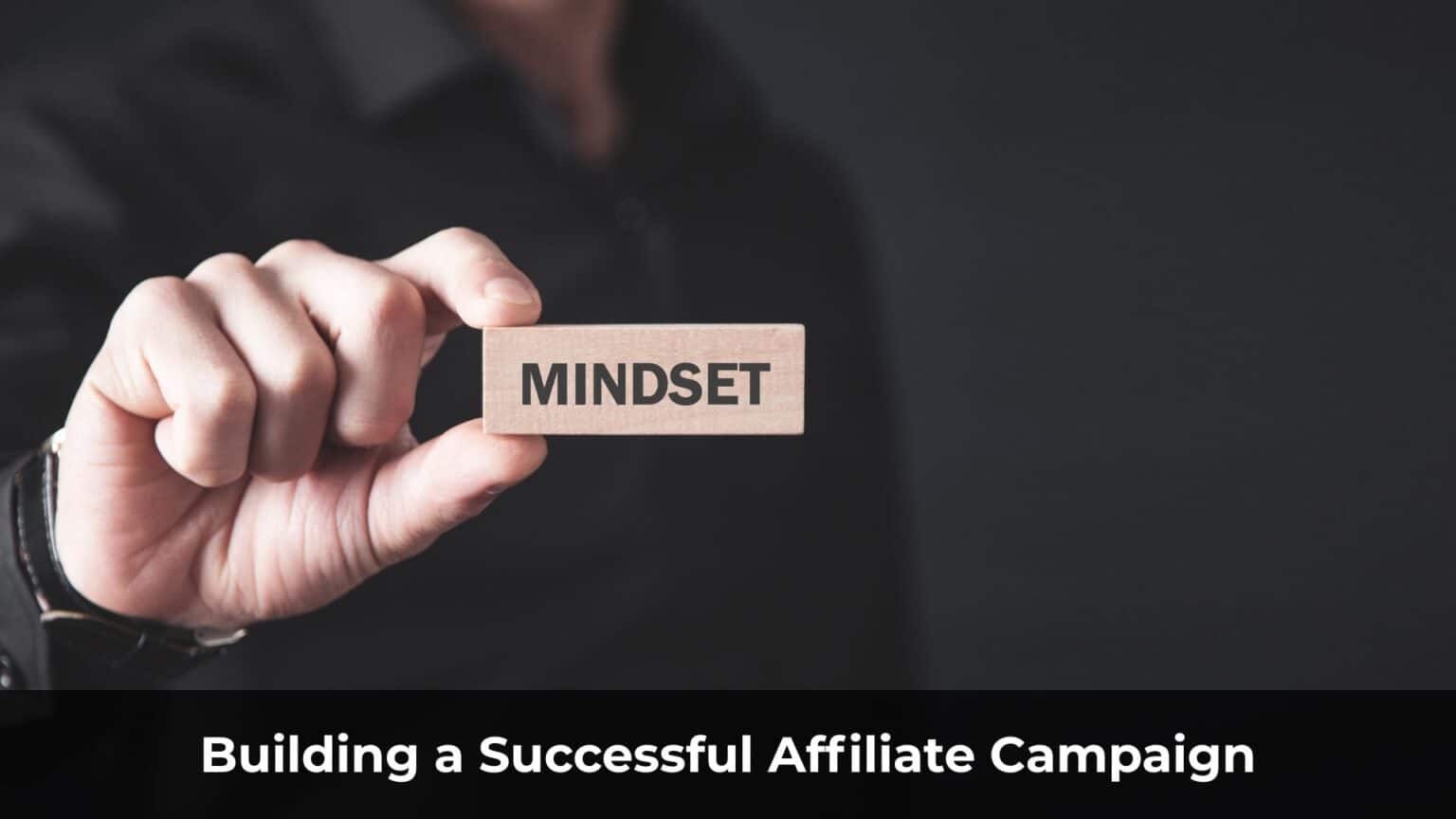When people first get into affiliate marketing, many fall into the trap of chasing quick wins.
They see someone else running an offer that’s generating sales—so they copy the campaign, hoping for the same results.
Sometimes it works. Most of the time, it doesn’t.
Many lose their entire ad budget and walk away without understanding what went wrong.
Here’s the truth: affiliate marketing isn’t a game of luck.
But if you treat it like a short-term hustle—jumping from one trend to the next, launching ads without a long-term plan—you’ll eventually run into trouble: banned ad accounts, dried-up traffic, and offers that stop converting.
So how do you avoid that spiral?
You build a lead generation system.
Lead gen—short for lead generation—is when you help businesses collect potential customer information, and get paid for every qualified lead you deliver.
You don’t have to make a sale. You don’t need to close a deal.
If someone enters their name, email, or phone number—you earn a commission.
Sounds simple, right? But when done right, lead gen can become a reliable income stream—especially for those who want to treat affiliate marketing as a real business, not just another passing trend.

Table of Contents
ToggleHow Lead Gen Works in Affiliate Marketing
Let’s break it down with a simple example:
Imagine a life insurance company wants to acquire more customers. They’re already running ads, but growth is slow—and they want to scale faster.
Instead of doing everything in-house, they decide to partner with affiliate marketers like you.
Your job? Help them attract potential leads by running ads, creating content, or building landing pages.
And every time someone fills out a form—sharing their name, phone number, or email—you get paid. That’s called a lead.
The user doesn’t have to make a purchase. They just need to show interest by submitting their contact info. From there, the company follows up to convert that lead into a customer.
Sounds simple—but behind the scenes, it’s a carefully managed system.
If you send high-quality leads—people who are genuinely interested—the company wins, and so do you.
But if you send fake leads, spam submissions, or people who have no intention of buying, the company loses money—and your partnership ends quickly.
That’s why lead gen isn’t just about “sending traffic and cashing in.” It’s a business model that demands professionalism. You need to understand the product, know your audience, and build trust—because great affiliates become long-term partners, not one-time promoters.

How to Generate High-Quality Leads
Let’s say you’re running ads for a premium car insurance company.
Their ideal customers? High-income individuals who drive newer vehicles and are willing to pay more for better coverage.
Now imagine you target your ads at younger drivers with low income, driving older cars.
They might still fill out the form—but the chances of them actually converting? Close to zero.
From the advertiser’s perspective, the numbers don’t lie. Their sales team follows up but fails to close any deals. Soon, they realize you’re sending the wrong kind of leads.
What happens next?
They’ll flag your leads as low quality and stop paying for them. Your affiliate manager will reach out and tell you to pause all traffic—immediately.
To generate high-quality leads, you can’t afford to wing it.
There are three core factors that directly impact the quality of the leads you deliver.
1. Choose the Right Traffic Source
Every traffic source has its own strengths and weaknesses.
Facebook Ads offer laser-sharp targeting—but come with the risk of account bans.
Google Ads bring high-intent users who are actively searching—but clicks can get expensive.
Then you have native ads, push notifications, email marketing, SEO… each with its own unique flavor.
But here’s the key: your traffic source needs to match the product.
You can’t use low-quality push ads to promote a high-end financial service and expect people to buy a $1,000 insurance plan. That’s just not how it works.
2. Targeting the Right Audience
This is where many affiliate marketers go wrong.
They think they’re targeting the right people—but in reality, they’re way off.
Say you’re promoting an advanced investment course. It’s designed for financially stable individuals who are willing to pay several hundred dollars to level up their skills.
But your ads are targeting 18–24-year-olds in rural areas who just started googling “how to get rich quick.”
You’re going to get bad leads—period.
To target correctly, you need to understand who the advertiser’s ideal customer really is.
- How old are they?
- What’s their income level?
- What kind of phone do they use?
- Where do they live?
- What habits or interests set them apart?
Facebook Ads are incredibly powerful for this. If you know how to use the tools, you can reach a hyper-specific audience—and that’s the foundation of generating high-quality leads.
3. Align Your Ad, Landing Page, and Offer
This is where many affiliates drop the ball.
You might have a killer ad—one that grabs attention and drives clicks. Your landing page looks clean and professional.
But when users finally reach the offer page… it feels completely unrelated.
What happens next?
They fill out the form out of curiosity—not because they’re genuinely interested. And the advertiser will notice. It only takes a few days of poor conversions to figure it out.
Here’s the simple formula:
Ad → Landing Page → Offer
Everything needs to align.
If your ad promises “the cheapest insurance on the market,” then your offer page better reinforce that message.
If it doesn’t, users will feel misled—and your leads will be marked as junk.
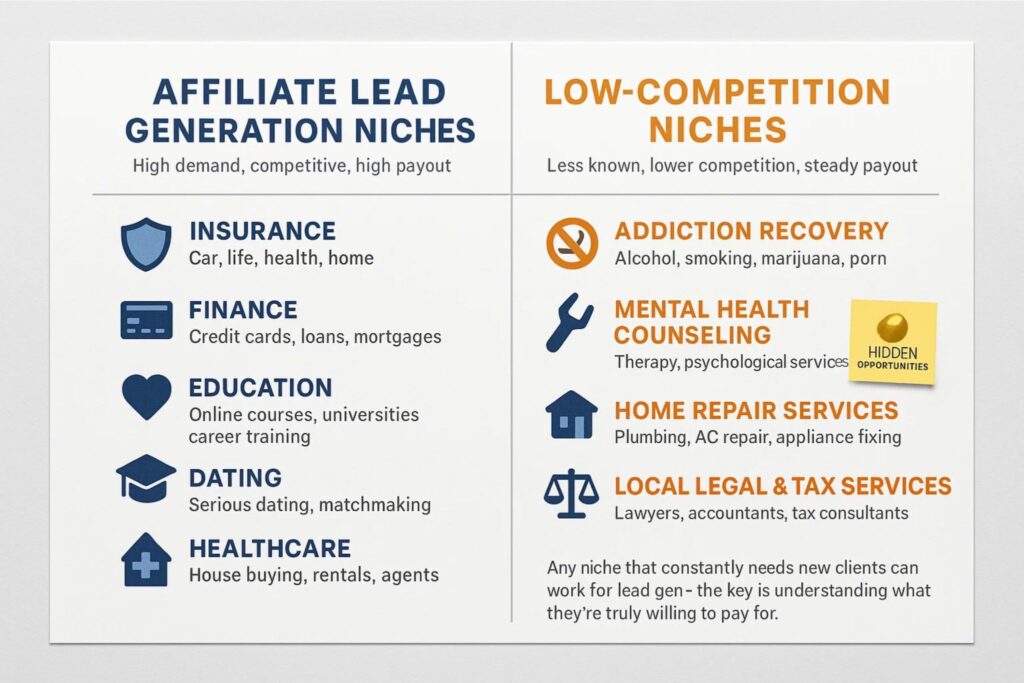
Top Lead Gen Niches: Popular vs. Untapped Opportunities
Lead gen doesn’t work in every industry—but here’s one clear rule:
If a business constantly needs new customers, it’s a strong candidate for lead gen.
And let’s face it—almost every business needs new customers.
To make things easier, let’s break it down into two categories:
(1) Popular Niches that most affiliates already know, and
(2) Underrated Niches that have less competition but strong potential.
Popular Niches Worth Exploring
These are industries where it’s easy to find offers, and many advertisers are ready to spend:
- Insurance: Auto, life, health, home—tons of companies competing for the same customers.
- Finance: Personal loans, credit cards, mortgages—payouts in this niche can be very high for qualified leads.
- Education: Online courses, universities, trade schools—especially in developed markets.
- Dating: Not just adult dating—serious dating platforms, matchmaking services, and relationship coaching.
- Healthcare & Wellness: Therapy consultations, telemedicine, health supplement trials.
- Real Estate: Lead gen for buying, renting, or real estate agents.
These niches are broad—and yes, competition is high.
But the upside? Advertisers often have big budgets and long-term goals. If you deliver quality leads, they’ll keep working with you.
Underrated Niches with Strong Potential
These niches are smaller, less saturated—but they still need leads and are willing to pay:
- Addiction Recovery: Alcohol, tobacco, cannabis, pornography—rehab centers are always looking for new clients.
- Mental Health & Therapy: Growing demand, especially in Western countries where stigma is decreasing.
- Home Repair Services: Plumbing, HVAC, electrical, appliance repair—local lead gen works incredibly well here.
- Legal, Accounting, and Tax Services: Small law firms and accounting offices need steady clients and often want leads from their local area.
Think of these niches as untapped gold mines.
Payouts might be lower per lead—but with less competition and more control, you have a real chance to dominate your niche if you’re consistent.
Choose the Right Niche Based on Market Tier
Payouts and competition vary depending on geography.
Tier 1 countries—like the US, Canada, UK, and Australia—are the top markets for lead generation.
Advertisers in finance, insurance, education, and legal services are willing to pay well (sometimes $10+ per lead).
But of course, the competition is fierce.
Tier 2 and Tier 3 regions—such as India, Southeast Asia, Eastern Europe, and Africa—have fewer legitimate lead gen offers.
Payouts are usually much lower, and many campaigns are unstable or too localized. That makes them less suitable for building a long-term system.
If you’re just starting out, Tier 2 markets can be a good place to learn and experiment. But to scale sustainably, you’ll want to focus on Tier 1.
At the end of the day, you don’t need the “hottest” niche.
You need a niche you understand—or are willing to understand better than anyone else.
Because when you know the customer well, you know how to generate quality leads. And that’s what keeps advertisers coming back.
Where to Find the Lead Gen Offers
If you want to run lead gen campaigns, you need offers.
Simple, right?
But if you’re just starting out, you might hit a wall—
You don’t know where to find offers, and every affiliate network you apply to seems to reject your application.
I’ve been there.
Here’s what I’ve learned—so you don’t waste time or get discouraged.
There are two common ways to find lead gen offers:
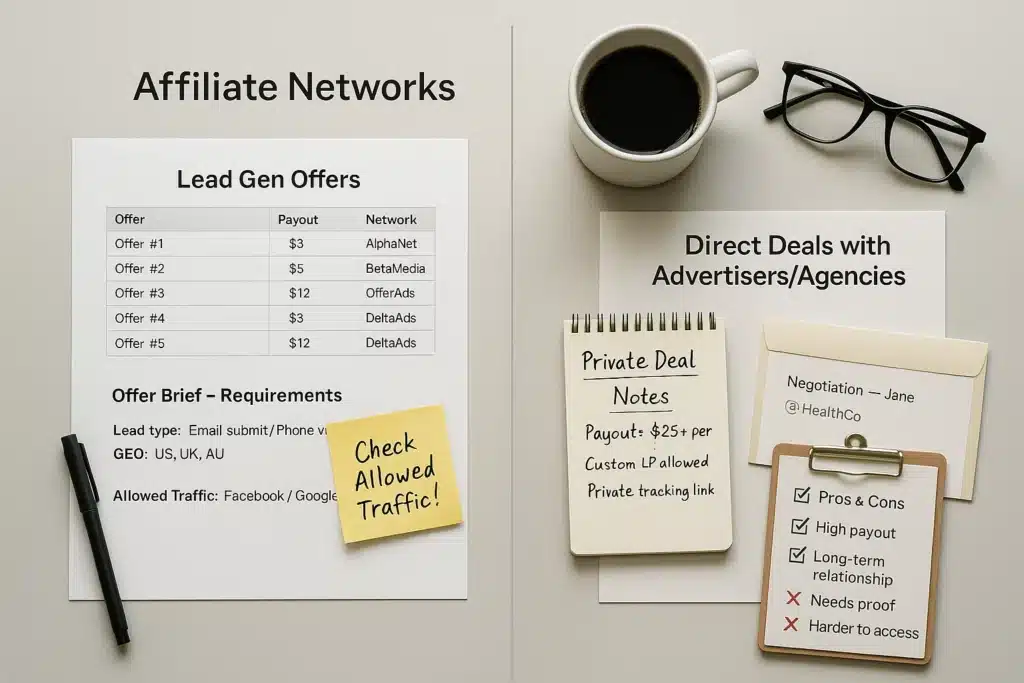
Affiliate Networks That Focus on Lead Gen
This is the easiest and most beginner-friendly option.
Once approved, you’ll get access to hundreds of offers with ready-to-use landing pages and clearly defined payouts.
Each offer will typically include:
- How much you’ll earn per lead ($3, $8, $12…)
- What the user has to do (just submit an email? or confirm via phone?)
- Geo restrictions (Can you run it in the US, Australia, or only the UK?)
- Approved traffic sources
Pay close attention to the “Allowed Traffic” section.
If an offer doesn’t allow Facebook Ads and you run it anyway, you risk being removed from the offer—or worse, losing the trust of your affiliate manager.
Partnering Directly with Advertisers or Agencies
This is a more advanced route—best for affiliates with experience and a proven track record.
If you’ve already collected data or successfully run campaigns in a specific niche, you can reach out directly to advertisers or agencies to negotiate custom deals.
The pros:
- Higher payouts (no middleman)
- More flexibility with tracking and custom landing pages
- Opportunity to build long-term partnerships
The cons:
- Harder to get in unless you have results to show
- Requires solid communication, negotiation skills, and trustworthiness
Top Affiliate Networks for Lead Gen Beginners
Lead gen success isn’t just about ad skills—
It also depends on partnering with the right networks.
A reliable network that pays on time, offers solid support, and provides quality offers can save you hours of frustration and help you scale faster.
Here are a few well-known networks worth considering:
- MaxBounty – Great selection of lead gen offers, easy to filter by vertical.
- ClickDealer – Strong in lead gen, dating, mobile apps, and sweepstakes.
- A4D – More advanced; better suited for experienced affiliates.
To discover even more networks, you can use Affpaying—a directory of affiliate networks with reviews and rankings.
Pro tip:
If you’re new, prepare a simple portfolio—or at least have a basic website with some traffic and a clear explanation of your experience when applying.
Start with easier networks like MaxBounty. Once you gain experience and results, you’ll have a much better chance of getting approved by stricter networks like A4D.
How to Launch a Profitable Lead Gen Campaign
If you’re just starting out, this is the fastest way to make money with lead gen:
Pick an offer, drive traffic to a landing page, and start generating leads.
Sounds simple—but doing it right requires a clear process.
You can’t just launch random ads.
And grabbing some pre-made landing page off the internet and hoping it works? That won’t cut it either.
Here’s a 5-step process you can follow.
Step 1: Start with Facebook Ads
Not every traffic source is ideal for lead gen.
Google Ads can be expensive.
Native ads require lots of data to optimize.
And SEO? It takes too long for beginners.
Facebook Ads remains the #1 choice for getting started.
Why?
- Highly detailed targeting: age, income level, purchase behavior, location, and more
- Perfect for regional or niche targeting
- Easy to test and pause campaigns quickly
- Powerful machine learning system that helps optimize ads automatically
Sure, there’s always the risk of getting your account banned—
But if you want to learn fast and understand how the market behaves, Facebook is still the best place to begin.
Step 2: Analyze Competitor Ads
Before you write your first ad, take a look at what others are doing.
Use ad spy tools to see what’s already working:
- Facebook Ads Library – free and official
- BigSpy, AdSpy – freemium or paid versions
Look for ads that have been running for at least a few weeks and have real engagement (shares, comments).
Take notes on their structure:
- What kind of headlines are they using?
- What images or videos?
- Are they using questions? Emotional triggers?
- What’s their CTA?
Don’t copy blindly.
Instead, learn from what’s already been proven to work—and make it your own.
Step 3: Build a Custom Landing Page
Many beginners use the default landing pages provided by the advertiser.
That’s a mistake.
Here’s why:
- You’re using the same page as hundreds of other affiliates
- Facebook may flag it as a low-value bridge page
- You can’t track anything or collect your own data
The solution? Build your own landing page.
It doesn’t have to be fancy. Just include:
- A clear, bold headline
- A short description that explains why someone should fill out the form
- A single, focused CTA (e.g., “Get Your Free Quote” or “Claim Your Gift”)
- If possible, add some social proof: testimonials, number of sign-ups, etc.
Tools like Leadpages or Instapage make it easy.
Or, if you’re on a budget, WordPress + Elementor works just fine.
Step 4: Set Up Campaign Tracking
Without tracking, you’re flying blind.
You won’t know where your leads are coming from, which ads are performing, or what audience and landing page combinations are converting best.
Even if you’re running small campaigns, always use a tracker such as:
- BeMob – free for up to 100,000 events per month
- Voluum or RedTrack – premium trackers with advanced features
Voluum and RedTrack are expensive—but they allow conversion data to be sent back to Facebook, which activates Facebook’s powerful optimization engine.
Once you have data, you can make smart decisions and improve conversions.
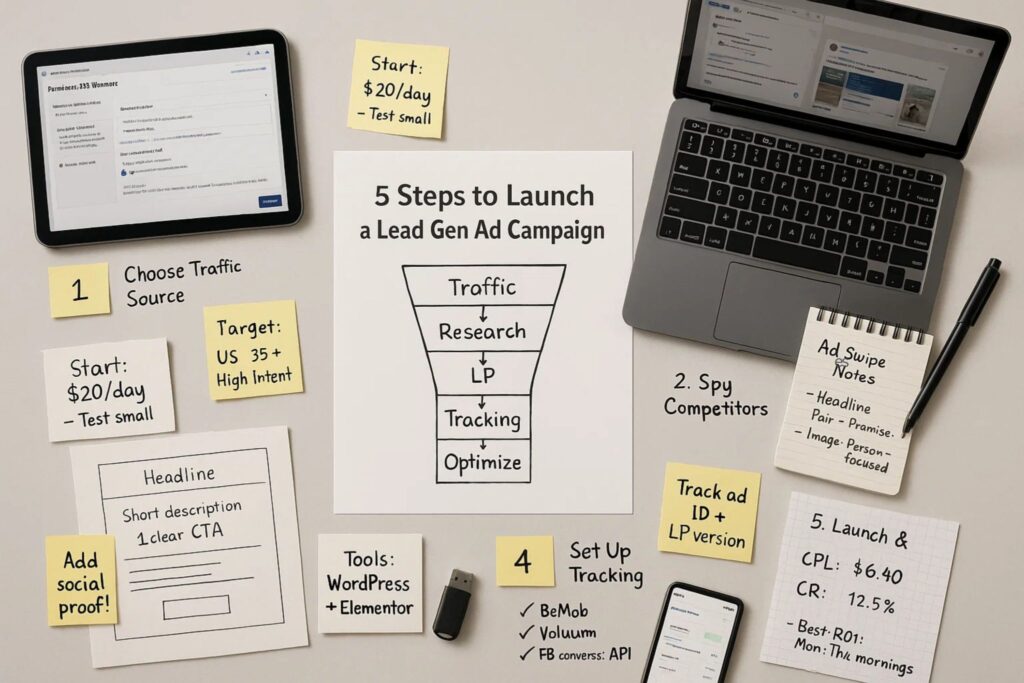
Step 5: Launch and Optimize
Once everything’s ready—your ad, landing page, and tracking setup—it’s time to go live.
Start small.
A daily budget of $10 to $30 is enough to begin testing.
Keep an eye on key metrics:
- CPL (Cost Per Lead) – how much you’re paying for each lead
- CR (Conversion Rate) – the percentage of visitors who fill out the form
- Most importantly: feedback from the advertiser—are your leads actually qualified?
I’ve had campaigns where I was profitable—but then the advertiser shut me down due to poor lead quality.
The affiliate manager (AM) contacted me and asked me to stop running traffic.
Not a fun moment—but it was their call.
They’re the ones paying us, after all.
But I’ve also had AMs message me saying,
“Your traffic is excellent. We’re increasing your cap. Can you scale this up?”
That’s the goal.
So take optimization seriously:
- Test every element of your campaign
- Kill ads that don’t perform
- Scale the ones that convert
- Target the best time slots, the best-performing days, and the regions where leads convert well
And always remember:
You’re not just chasing commissions—you’re helping advertisers get real customers.
Turn Lead Gen into a Scalable System
Once you’ve gained experience running ads, optimizing campaigns, and building landing pages—
It’s time to level up.
Instead of sending every lead directly to the advertiser,
Start collecting leads for yourself.
What does that mean?
- You own the user’s email list
- You can nurture them over time—instead of promoting just one offer
- You can promote multiple offers, from different advertisers
- And if one advertiser stops working with you, you still own the data and can keep selling
This is the difference between short-term affiliate marketing and building a long-term lead gen system.
So how do you do it?
Step 1: Set Up Your Own Website
You’ll need a central hub for your lead gen system.
It doesn’t have to be complicated. Just set up:
- A blog with helpful content related to your niche
- A landing page offering a free gift in exchange for an email
- A few SEO articles to bring in organic traffic (you can use AI to speed up content creation)
Use WordPress, grab a clean domain name, and pick a simple theme—that’s enough to get started.
Step 2: Capture Emails with Custom Forms
Don’t send users directly to the advertiser’s offer page.
Instead, create your own lead capture form. For example:
- “Get a free quote”
- “Download our PDF guide”
- “Join a free email series packed with insights”
You can use tools like:
- GetResponse – beginner-friendly, with automation, landing pages, and webinar tools
- Kit.com– perfect for simple email sequences and tagging based on user behavior
- Systeme.io – an all-in-one solution for email, funnels, courses, and landing pages
- ActiveCampaign – powerful automation, behavioral tracking, and advanced segmentation
Create a simple funnel like this:
Ads / SEO → Landing Page → Email Capture → Redirect to Offer
This way, you earn affiliate commissions and grow your own email list at the same time.

Step 3: Nurture Leads with Email and Ongoing Offers
Once you’ve built an email list, it’s time to activate your autoresponder sequence.
Depending on your niche, you can send:
- Helpful tips, insights, or case studies
- Product or service comparisons
- Limited-time promotions
- New lead gen offers within the same topic
Example: If you’ve captured leads interested in car insurance,
a few days later you can send them offers for home insurance, advanced driving courses, or anything relevant and genuinely valuable.
Don’t spam. Don’t blast random links.
Treat your emails like you’re building a real relationship with real people.
The more trust you build, the easier it becomes to convert leads into customers—again and again.
This is where things shift.
You’re no longer just an affiliate sending traffic.
You own the data, choose the offers, and scale on your own terms.
And eventually, you’ll realize:
You’re not just doing affiliate marketing anymore—
You’re building a lead generation system.
A system that every business out there needs.
Pro tip:
If you’re sending emails at scale, monitor your engagement metrics regularly— open rates, click-through rates, unsubscribe rates.
Update your email sequences if they start to underperform.
If too many people ignore, delete, or report your emails as spam,
your sender reputation drops—and your messages will land in the spam folder by default.
Final Thoughts
Lead generation isn’t a get-rich-quick scheme.
It’s not flashy like dropshipping.
It doesn’t have the wild ups and downs of blackhat ad strategies.
And no—you won’t wake up rich overnight.
But if you do it right…
If you stick with it…
If you treat it seriously—
Lead gen can give you something most affiliates never achieve:
Stability.
Sure, ad accounts can still get banned—even when you run clean, whitehat campaigns.
But when you’ve built your own system—
Your own funnel, your own email list, your own process—
The risks go way down. And even if something goes wrong, you’re in a much better position to bounce back and appeal.
No more waking up worried your account is gone.
No more chasing trends.
No more gambling on campaigns that live or die by luck.
Instead, you build a system.
A steady income stream.
A long-term relationship with advertisers.
And most importantly—you create real value in the supply chain.
Not everyone chooses this path.
But if you do—commit to it fully.
Because what you’re building isn’t just another campaign.
It’s a career.
So if you’re looking for a smarter, more stable way to grow in affiliate marketing, lead gen is a path worth exploring.
You’re not just chasing clicks—you’re building value. And that’s what makes it last.
